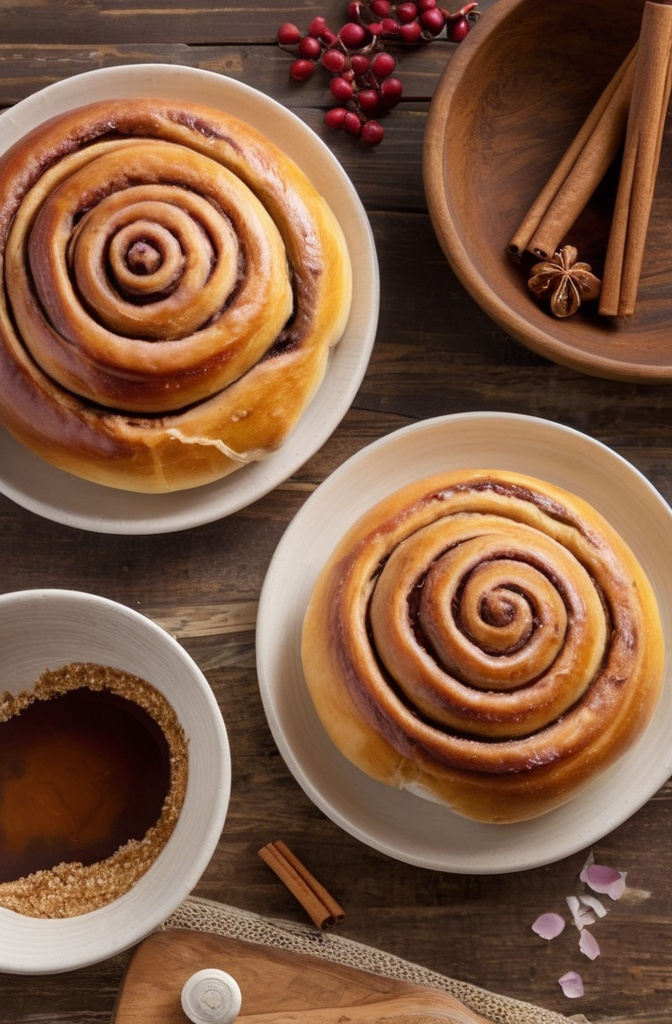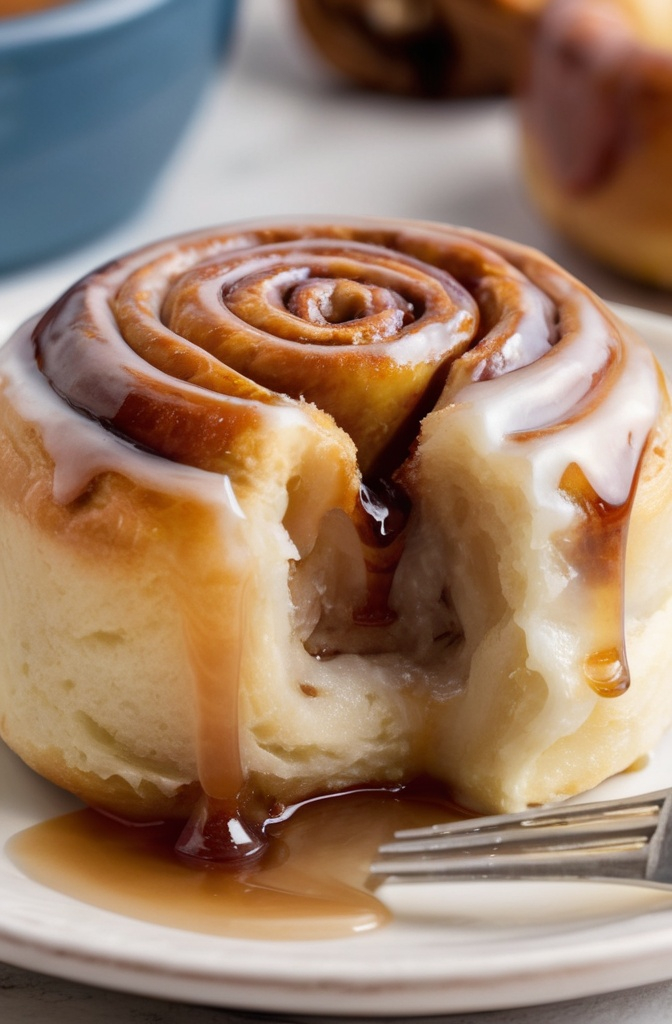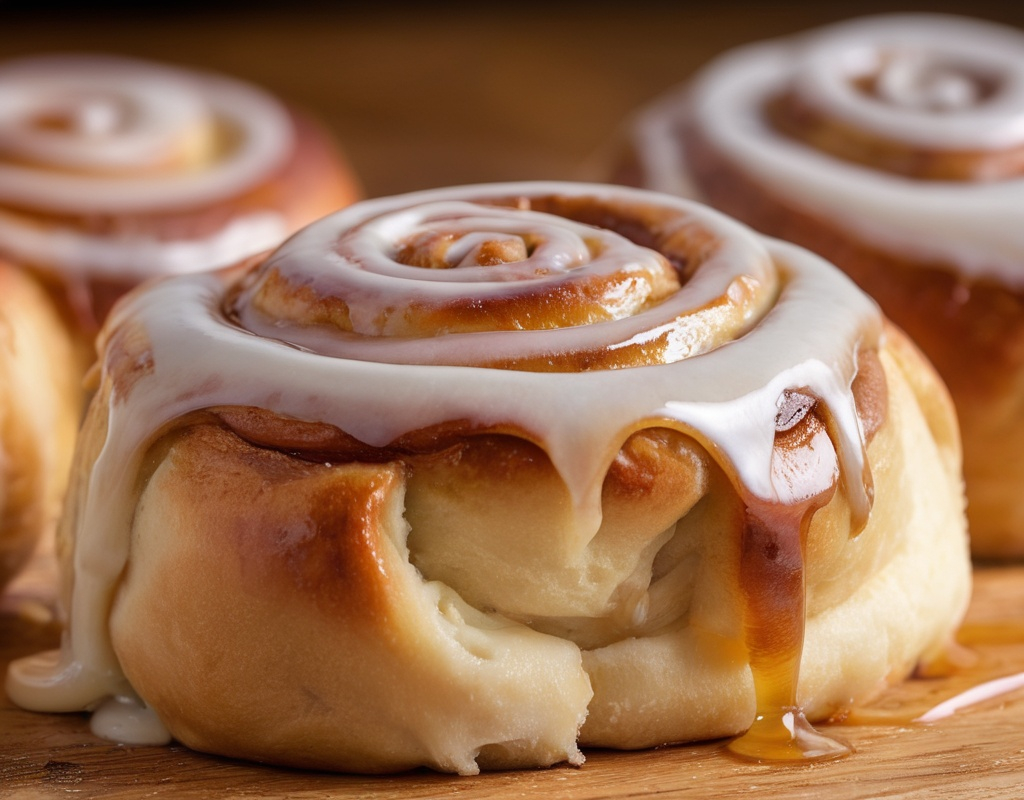There’s something mildly scandalous about biting into a warm cinnamon roll that doesn’t follow the rules. And Hawaiian cinnamon rolls, well, they break all of ‘em—in the best way possible. Fluffy, sticky, tropically sweet, and just a lil’ bit rebellious, these rolls are a culinary underdog rising fast in artisan bakeries and resort kitchens alike. And no, it ain’t just pineapple tossed on top and called “Hawaiian.” That’d be an insult.
This piece dives into the rich flavor chemistry, cultural nuances, and advanced techniques that set Hawaiian cinnamon rolls apart from the classic mall-core version. Whether you’re a pastry chef, bakery consultant, or flavor developer, knowing how to layer bold island notes into a delicate dough matrix is part of the edge you want in a saturated market. This isn’t a recipe post. This is war strategy for flavor domination.
The Soul of the Roll: Hawaiian Identity in a Bun
To understand the Hawaiian cinnamon roll, you gotta start with its roots. No, not the fake “tiki bar” vibe. I’m talkin’ about the actual culinary intersection of Polynesian, Asian, and Western techniques that have made Hawaiian cuisine what it is today.
Pineapple? Sure, it makes cameos. But think deeper: macadamia nuts, coconut milk, taro, mango, dark rum, and the umami whisper of Hawaiian sea salt. These are your real tools.
A study published in the Journal of Culinary Science & Technology (2020) found that when coconut milk was used as a fat substitute in yeast doughs, the resulting crumb scored higher in sensory panels for softness, sweetness, and overall appeal—by 17%, to be exact. That’s not small. That’s a product shift.
You want to infuse identity into your cinnamon roll without making it a caricature. That’s the tightrope.
Dough that Breathes: Building the Base with Intent
Let’s talk structure. Cinnamon roll dough sits somewhere between brioche and milk bread. Soft, elastic, rich—but not quite a laminated pastry. Hawaiian cinnamon rolls push this further.
You’re aiming for a dough enriched with coconut milk and pineapple juice, maybe even a hint of mashed ripe banana (and if you ain’t tried it, just… do). These aren’t just flavor tweaks; they’re hydration changes. The juice brings acidity, which alters the gluten network and fermentation curve.
Too much acidity, and your yeast starts huffin’ like it ran a marathon. You get low rise, dense crumb. Not what you want. You gotta balance pH with either a pre-ferment or by adjusting your sugar load.
Professional tip? Add your acidic elements after your autolyse. Let the flour and liquid do their gluten magic first, then mess with it.
Also, bulk fermentation needs a watchful eye here. Pineapple enzymes (like bromelain) can literally break down gluten if fresh juice is used. Canned juice is pasteurized—less enzyme activity. Or flash-heat it if you’re a purist.

Sweet Isn’t Just Sweet: The Filling Formula
Regular cinnamon rolls are sugar bombs with a spice whisper. Hawaiian cinnamon rolls, though, gotta sing in harmony.
You start with the usual suspects—brown sugar, cinnamon, butter. But now, invite toasted coconut flakes to the party. Maybe chopped macadamia nuts. A whisper of clove, or even a dusting of cardamom if you’re pushing global.
Want deep notes? Add dark rum to your filling mix. One tablespoon goes a long way and turns your roll into a story. Rum isn’t just alcohol—it’s molasses, wood, island heat. And that comes through in the bake.
Here’s a fun thing: blend dehydrated pineapple into your sugar mix. A study from the Food Chemistry Journal (2021) showed that fruit sugar crystals caramelize differently than cane sugar, offering a more complex Maillard profile. Translation: better flavor when the rolls bake.
The Glaze Is Not Decoration. It’s Strategy.
Too many chefs treat glaze like a costume. Wrong. It’s part of the bite sequence. Hawaiian cinnamon rolls need a glaze that extends flavor—not just piles sweetness.
Your target is a coconut cream cheese glaze. Real coconut milk (not the watery stuff), balanced with lemon zest or even calamansi for acid. This brightens the heaviness and stops the palate from fatiguing.
Want to push innovation? Try a passionfruit reduction glaze. Tangy, exotic, and gorgeous in color. Chefs in upscale resorts across Maui and Kauai have been leaning into passionfruit (lilikoi) as their not-so-secret flavor weapon in recent years. It cuts through butter like a tropical sabre.
Roll Shaping: Details That Sell
Shape matters. Standard spirals work, but have you tried laminating Hawaiian cinnamon roll dough lightly? Not for flake, but for structure.
Three folds, one freeze, rolled tight—it gives you those sexy layers when torn apart. That’s how you Instagram your way to product-market fit.
Size? Mini rolls are trending. According to a 2023 Technomic bakery trend report, “snackable indulgence” rose by 22% in consumer preference year over year. Mini Hawaiian rolls, especially with luxe ingredients, hit that mark dead-on.
Another idea: bake them in banana leaf-lined tins. Adds scent, branding power, and moisture retention. Looks artisanal, too.
The Fermentation Equation: What You Don’t See Matters Most
Time is a sneaky ingredient. If you want depth, you gotta give your dough time to think about its decisions.
Cold fermentation (16–24 hrs) gives the flavors space to round out. You reduce yeast quantity slightly, retard in the fridge, and let natural enzymatic activity do its thing.
This step also helps complex sugars from fruit juice break down slowly, preventing gumminess.
Too many bakers rush this part. Hawaiian cinnamon rolls aren’t a Tuesday item. They’re a Friday feature. Treat ’em like it.

Case Study: Honolulu’s Artisan Boom
Look at Sweet ‘Aina Bakery in downtown Honolulu. They launched their signature pineapple-coconut cinnamon rolls in late 2022. Within 6 months, those rolls accounted for 42% of their total pastry revenue. That’s not a fad. That’s proof of product-market resonance.
Their secret? Locally-sourced lilikoi puree, double-fermented dough, and a macadamia brittle topping. You bite into one and… it’s not nostalgia. It’s discovery.
They don’t overdo the sweetness. Their glaze has salt. Their nuts are toasted. Their dough is pillow-light with just a hint of chew. Professional restraint shows.
The Mistakes Everyone Makes
Let’s be real. Most Hawaiian cinnamon rolls on the market are lazy.
They throw pineapple on top. Maybe coconut in the glaze. They don’t fix hydration, don’t calibrate acid. They’re sweet-on-sweet-on-sweet, and the texture collapses after 2 hours.
If you want to lead the pack, be the one who studies fermentation curves. Who toasts coconut for deeper flavor. Who uses powdered mango as a dusting sugar instead of icing. That’s where the magic is.
What’s Next: Emerging Trends in Tropical Pastry
You’re gonna start seeing more fermented tropical fruits in fillings—think guava and sour mango chutney. Not just for flavor, but for probiotics and wellness claims.
Savory-sweet hybrids are inching in too. Ube-coconut cinnamon rolls with miso caramel. Or Hawaiian chili pepper glaze with papaya bits. Don’t laugh. It’s coming.
Plant-based? Coconut milk and avocado butter are perfect subs. The natural fat distribution mimics dairy beautifully in enriched doughs. Vegans will throw money at it.
Wrap It Up: Key Takeaways for the Pros
- Flavor layering is not optional. Tropical ingredients are potent—use them with precision.
- Balance acidity from fruits with dough development strategies. Know your enzymes.
- Structure sells. Laminate or shape with intention to get that visual and mouthfeel wow.
- Glaze is not an afterthought. Build a contrasting flavor profile. Don’t just dump sugar.
- R&D matters. Test cold fermentation timelines. Evaluate your hydration curves. Small changes in juice or puree can derail your dough.
- Don’t trend-chase. Build from authentic flavor traditions, not stereotypes.
You ain’t just baking rolls. You’re composing edible music with instruments from every corner of the islands. If done right, Hawaiian cinnamon rolls become more than dessert—they become memory, nostalgia, a feeling.
So. Next time someone says cinnamon rolls are basic, hand ’em one of yours. Watch their face. That’s when you know you’ve done it right.
Want a formula template to start testing your own variation?
FAQs
What makes a Hawaiian cinnamon roll different from a regular one?
It uses tropical ingredients like coconut milk, pineapple juice, and macadamia nuts for deeper flavor and unique texture.
Can I use fresh pineapple juice in the dough?
Only if it’s been pasteurized or lightly heated—raw juice enzymes can destroy gluten structure.
What type of glaze works best for Hawaiian cinnamon rolls?
A coconut cream cheese glaze or a passionfruit reduction adds the right balance of sweetness and brightness.
Are Hawaiian cinnamon rolls overly sweet?
They shouldn’t be—balanced rolls use acidity, salt, and texture to avoid sugar overload.
How do I avoid a dense or gummy texture?
Use correct hydration ratios and give the dough a long, cold fermentation to develop properly.
Can Hawaiian cinnamon rolls be made vegan?
Yes, with coconut milk, avocado butter, and plant-based cream cheese, you can easily adapt them.
What’s the ideal fermentation time for best flavor?
Cold ferment for 16–24 hours to develop complex flavors and a better rise.
Can I freeze Hawaiian cinnamon roll dough?
Yes, freeze after shaping but before the final proof for best results.
Are mini Hawaiian cinnamon rolls a good idea for bakeries?
Absolutely—they meet current trends in “snackable indulgence” and drive higher sales per unit.
What’s a good way to stand out with this product?
Use non-obvious ingredients like lilikoi, taro, or miso to add depth and signature flair.

Mariana is a passionate home cook who creates delicious, easy-to-follow recipes for busy people. From energizing breakfasts to satisfying dinners and indulgent desserts, her dishes are designed to fuel both your body and hustle.
When she’s not in the kitchen, she’s exploring new flavors and dreaming up her next recipe to share with the Foodie Hustle community.

